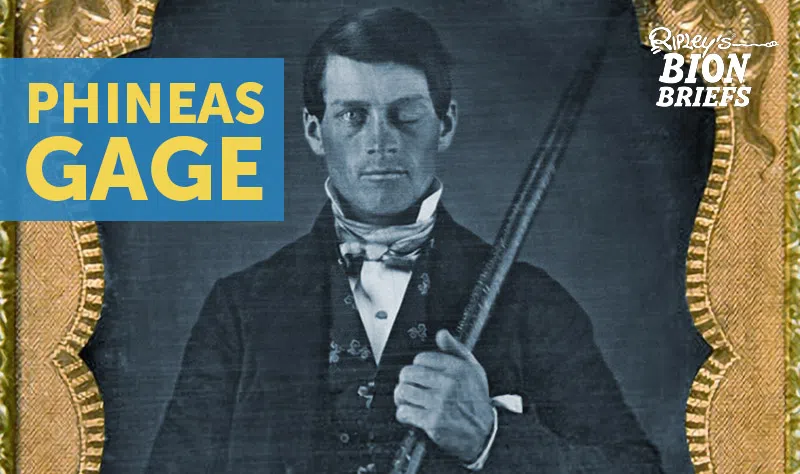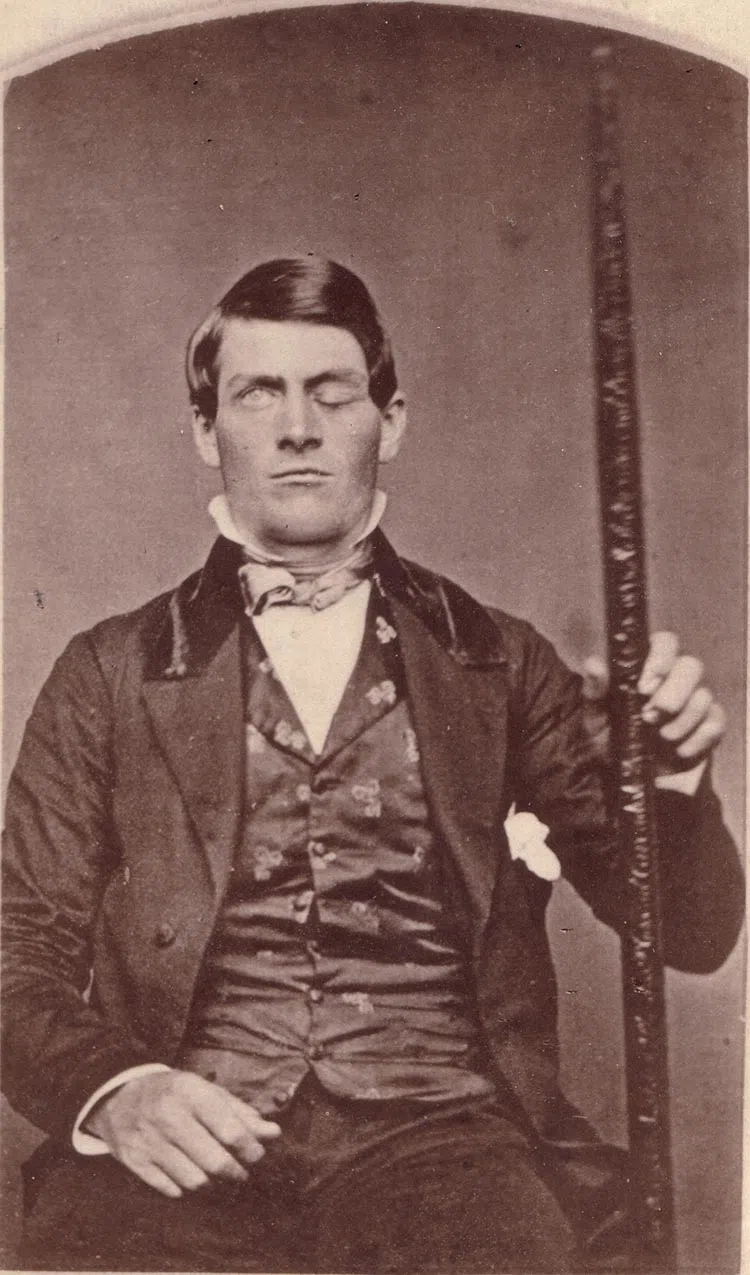The Oddity Of Neuroscience: Phineas Gage
Featured in Ripley's Believe It or Not!

Phineas Gage
When 25-year-old Phineas Gage went into the Vermont wilderness to work as a railroad foreman in 1848, he had no idea that his story would show up in psychology textbooks for the next 150 years.

 Cared for by Dr. John Martin Marlow, Gage was able to recover, at least physically. He lost his left eye, but according to friends and family, he lost something else: himself. Once known as a model worker and mild-mannered man, Gage became disrespectful and impetuous. The railroad refused to hire him back, and Dr. Marlow wrote that he was “no longer Gage.” He would utter profanities constantly and was reported to be generally intolerable by anyone.
Cared for by Dr. John Martin Marlow, Gage was able to recover, at least physically. He lost his left eye, but according to friends and family, he lost something else: himself. Once known as a model worker and mild-mannered man, Gage became disrespectful and impetuous. The railroad refused to hire him back, and Dr. Marlow wrote that he was “no longer Gage.” He would utter profanities constantly and was reported to be generally intolerable by anyone.

